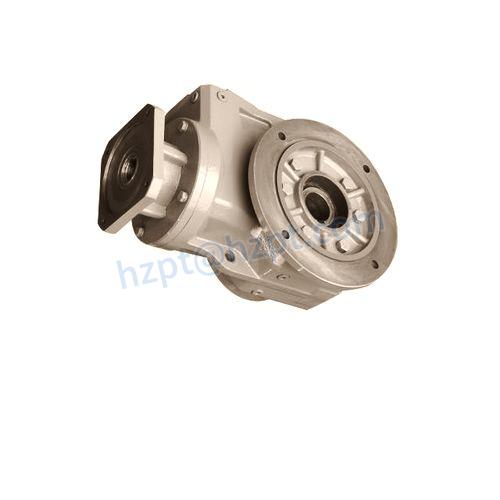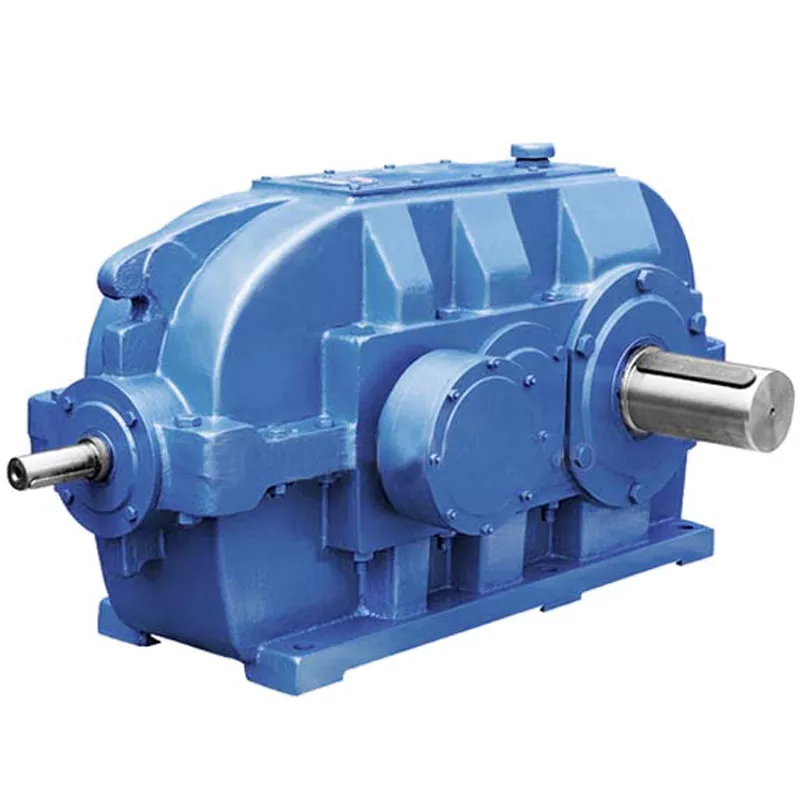Product Description
General Specification:
Step Angle Accuracy: ±5%
Resistance Accuracy: ±10%
Inductance Accuracy: ±20%
Temperature Rise: 80°C Max
Ambient Temperature: -20°C~+50°C
Insulation Resistance: 100MΩ Min., 500VDC
Dielectric Strength: 500VAC for 1 minute
Shaft Radial Play: 0.02Max (450g-load)
Shaft Axial Play: 0.08Max (450g-load)
Max. radial force:220N (20mm from the flange)
Max. axial force:60N
Specification:
nema 34 closed loop stepper motor
| Model No. | Step Angle | Motor Length | Current /Phase |
Resistance /Phase |
Inductance /Phase |
Holding Torque | # of Leads | Detent Torque | Rotor Inertia | Mass |
| ( °) | (L)mm | A | Ω | mH | N.m | No. | Kg.cm | g.cm2 | Kg | |
| 86HS78-6004XBJED-0.35M | 1.8 | 78 | 6 | 0.27 | 2 | 4.5 | 4 | 1.2 | 1400 | 2.8 |
| 86HS115-6004YBJED-0.35M | 1.8 | 115 | 6 | 0.36 | 3.8 | 8.5 | 4 | 2.4 | 2700 | 4.3 |
| 86HS155-6004YBJED-0.35M | 1.8 | 155 | 6 | 0.44 | 3.8 | 12 | 4 | 3.6 | 4000 | 5.9 |
Nema 34 stepper motor
| Model No. | Step Angle | Motor Length | Current /Phase |
Resistance /Phase |
Inductance /Phase |
Holding Torque | # of Leads | Detent Torque | Rotor Inertia | Mass |
| ( °) | (L)mm | A | Ω | mH | N.m | No. | Kg.cm | g.cm | Kg | |
| JK86HS68-5904 | 1.8 | 67 | 5.9 | 0.28 | 1.7 | 3.4 | 4 | 0.8 | 1000 | 1.7 |
| JK86HS68-2808 | 1.8 | 67 | 2.8 | 1.4 | 3.9 | 3.4 | 8 | 0.8 | 1000 | 1.7 |
| JK86HS78-5504 | 1.8 | 78 | 5.5 | 0.46 | 4.0 | 4.6 | 4 | 1.2 | 1400 | 2.3 |
| JK86HS78-4208 | 1.8 | 78 | 4.2 | 0.75 | 3.4 | 4.6 | 8 | 1.2 | 1400 | 2.3 |
| JK86HS97-4504 | 1.8 | 97 | 4.5 | 0.66 | 3.0 | 5.8 | 4 | 1.7 | 2100 | 3.0 |
| JK86HS97-4008 | 1.8 | 97 | 4.0 | 0.98 | 4.1 | 4.7 | 8 | 1.7 | 2100 | 3.0 |
| JK86HS100-6004 | 1.8 | 100 | 6.0 | 0.36 | 2.8 | 7.0 | 4 | 1.9 | 2200 | 3.1 |
| JK86HS115-6004 | 1.8 | 115 | 6.0 | 0.6 | 6.5 | 8.7 | 4 | 2.4 | 2700 | 3.8 |
| JK86HS115-4208 | 1.8 | 115 | 4.2 | 0.9 | 6.0 | 8.7 | 8 | 2.4 | 2700 | 3.8 |
| JK86HS126-6004 | 1.8 | 126 | 6.0 | 0.58 | 6.5 | 6.3 | 4 | 2.9 | 3200 | 4.5 |
| JK86HS155-6004 | 1.8 | 155 | 6.0 | 0.68 | 9.0 | 13.0 | 4 | 3.6 | 4000 | 5.4 |
| JK86HS155-4208 | 1.8 | 155 | 4.2 | 1.25 | 8.0 | 12.2 | 8 | 3.6 | 4000 | 5.4 |
| Application: | 3D Printer |
|---|---|
| Speed: | Low Speed |
| Number of Stator: | Two-Phase |
| Excitation Mode: | HB-Hybrid |
| Function: | Driving |
| Number of Poles: | 2 |
| Samples: |
US$ 100/Piece
1 Piece(Min.Order) | |
|---|
| Customization: |
Available
| Customized Request |
|---|

Choosing Lubrication for Angle Gearboxes
When selecting lubrication for angle gearboxes, several critical considerations should be taken into account:
- Operating Conditions: The operating environment, temperature range, and exposure to moisture or contaminants play a significant role in determining the type of lubricant needed.
- Load and Torque: The load-carrying capacity and torque requirements of the gearbox impact the choice of lubricant viscosity and additives.
- Speed: The speed of the gearbox influences the lubricant’s ability to form and maintain a protective film between gear surfaces.
- Materials: Consider the materials of the gears, bearings, and other components to ensure compatibility with the lubricant.
- Lubricant Type: Choose between oil and grease lubrication, considering factors like lubrication intervals, leakage, and sealing effectiveness.
- Viscosity: The lubricant’s viscosity should match the gearbox’s operational requirements, providing sufficient film thickness without causing excessive drag.
- Extreme Conditions: In extreme temperatures or harsh conditions, specialized lubricants with additives for high-temperature, low-temperature, or extreme-pressure performance may be necessary.
- Sealing: The gearbox’s sealing effectiveness impacts lubricant retention and protection against contaminants.
- Compatibility: Ensure that the chosen lubricant is compatible with any existing lubricants or residues to prevent chemical reactions.
- Maintenance: Consider ease of lubricant replenishment and maintenance intervals when selecting a lubrication solution.
Choosing the appropriate lubrication for angle gearboxes is essential to ensure smooth operation, minimize wear and friction, extend the gearbox’s lifespan, and maintain overall efficiency and reliability.

Handling Load and Torque Variations in Angle Gearboxes
Angle gearboxes are designed to handle variations in load and torque during operation effectively. They employ several mechanisms to ensure smooth performance and prevent damage:
- Built-in Strength: Angle gearboxes are constructed with durable materials and precision engineering to withstand varying loads and torques. The materials used, such as high-quality metals and alloys, contribute to the gearbox’s ability to handle different levels of stress.
- High Torque Capacity: Many angle gearboxes are designed with high torque capacities to handle heavy loads without compromising performance. This allows them to transmit power efficiently even when subjected to sudden changes in load.
- Clutches and Brakes: Some angle gearboxes are equipped with clutches and brakes that allow for controlled engagement and disengagement of the gearbox. These features help manage torque variations and protect the gearbox from sudden shocks or overloads.
- Variable Gear Ratios: Angle gearboxes often have the ability to switch between different gear ratios. This flexibility allows the gearbox to adjust to changing torque requirements, ensuring that the output maintains the desired level of torque and speed.
- Feedback and Control Systems: In modern applications, angle gearboxes can be integrated with feedback and control systems that continuously monitor torque and load conditions. These systems can make real-time adjustments to the gearbox’s operation to accommodate variations and prevent overload.
By combining these features and mechanisms, angle gearboxes can effectively manage fluctuations in load and torque, making them suitable for applications where the conditions may change dynamically. This adaptability enhances the reliability and longevity of the gearbox while maintaining consistent performance.

Contribution of Angle Gearboxes to Changing Rotational Direction
Angle gearboxes, also known as bevel gearboxes, play a significant role in altering the direction of rotational motion in mechanical systems. They achieve this by utilizing specially designed bevel gears that have their teeth cut at an angle, typically 90 degrees. This angled configuration allows the gears to mesh smoothly while transmitting power between intersecting shafts at different angles.
Here’s how angle gearboxes contribute to changing the direction of rotational motion:
- Meshing of Bevel Gears: Angle gearboxes consist of two bevel gears with intersecting shafts. The gears have teeth that are cut in a way that enables them to mesh together when the shafts are at an angle, usually perpendicular to each other.
- Transfer of Torque: When one bevel gear receives rotational input from a source, it transmits torque to the second bevel gear through the meshing of their teeth. This transfer of torque allows power to be transmitted from one shaft to the other.
- Change in Direction: As the first bevel gear rotates, it drives the second bevel gear to rotate in a direction that is perpendicular to the input shaft. This change in direction of rotation is a fundamental function of angle gearboxes.
- Multiple Configurations: Angle gearboxes come in various configurations to accommodate different angles between shafts, including right angle (90 degrees), acute angles, and obtuse angles. This versatility allows them to adapt to diverse applications.
Angle gearboxes are crucial components in mechanical systems where the input and output shafts need to be oriented at different angles. Their ability to smoothly change the direction of rotational motion makes them valuable in a wide range of industries and applications.


editor by CX 2023-11-27
